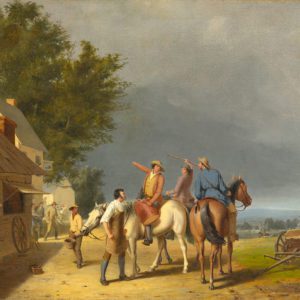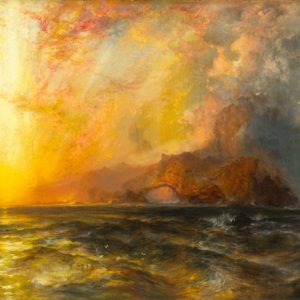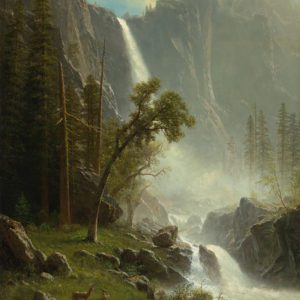American
The Museum’s American art collection encompasses paintings and sculpture from the late colonial period (mid-18th century) to the advent of modern art in the early 20th century, beginning with three imposing portraits by John Singleton Copley, the country’s first great artist, and concluding with a vibrant group of paintings by the leading American impressionists. In between the collection addresses many of the important themes and subjects of American art history, such as the celebration of wilderness and the search for a national identity; the conflicts over race, immigration, and social class; and the rapid evolution of society from Jefferson’s republic of farmers to Rockefeller’s industrial dynamo.

About
Chief among the works in the American collection is Copley’s magnificent portrait of Sir William Pepperrell (1746–1816) and His Family (1778), which heralded the artist’s arrival in London. It not only demonstrates Copley’s genius for transmuting paint into fabric, wood, and flesh; it also attests how quickly the colonial painter adapted his style to the grand manner of English portraiture.
The American collection is notably strong in landscapes by artists of the Hudson River school, the first great American art movement. Jasper Cropsey mythologizes the indomitable homestead family in Eagle Cliff, Franconia Notch, New Hampshire (1858), while Albert Bierstadt’s Bridal Veil Falls, Yosemite (circa 1871–73) presents a grand vision of still-untrammeled nature.
The pastoral landscape is the setting for Winslow Homer’s Weaning the Calf (1875), a scene of boys on a farm right out of Tom Sawyer. Such charming recollections of childhood were balm to a nation only just recovering from horrific civil war. A more genteel diversion is offered by Frederick Frieseke’s The Garden Parasol (circa 1910) depicting two ladies at ease in a sun-dappled garden. The painting is not just the artist’s masterpiece; it is one of the undisputed masterpieces of American impressionism.


















